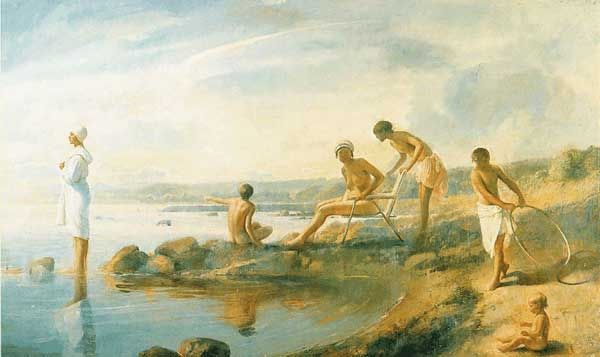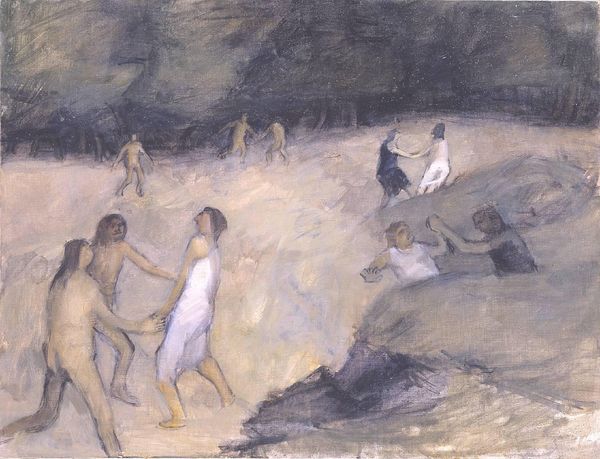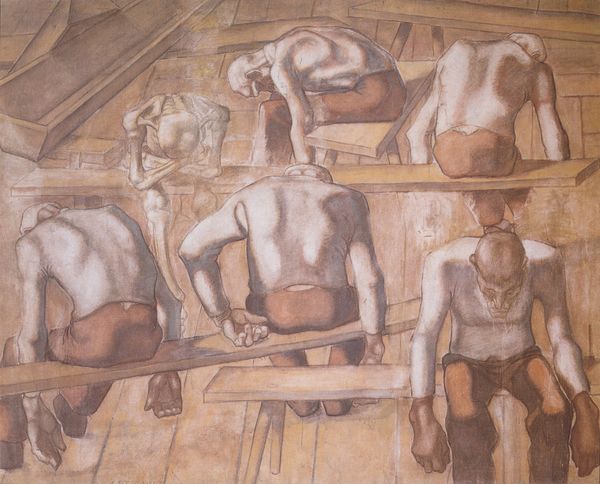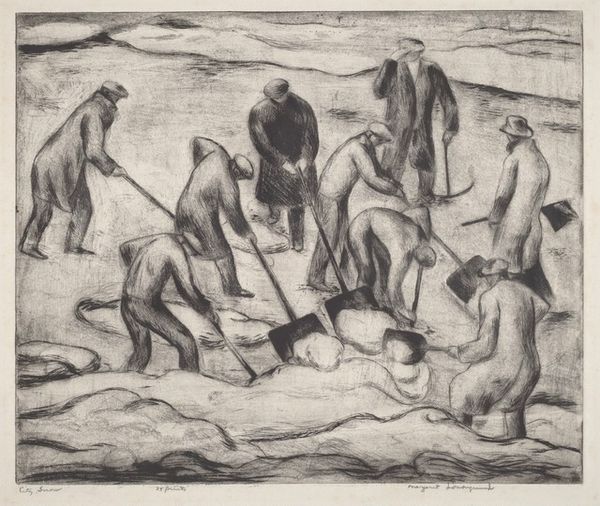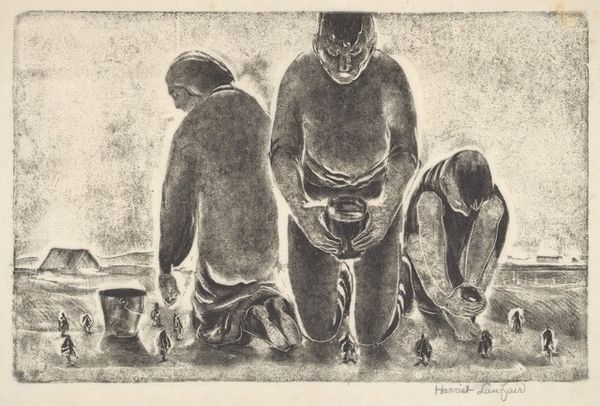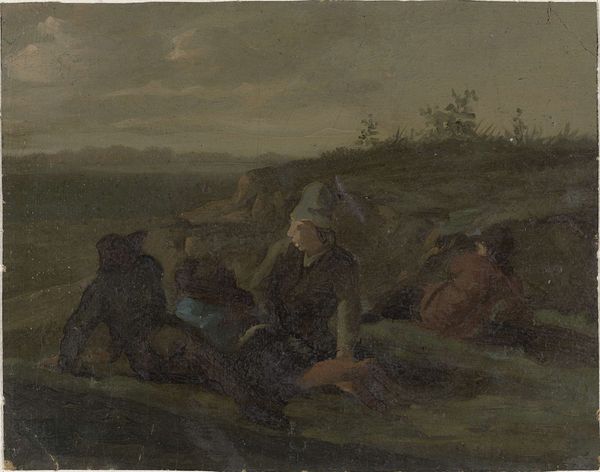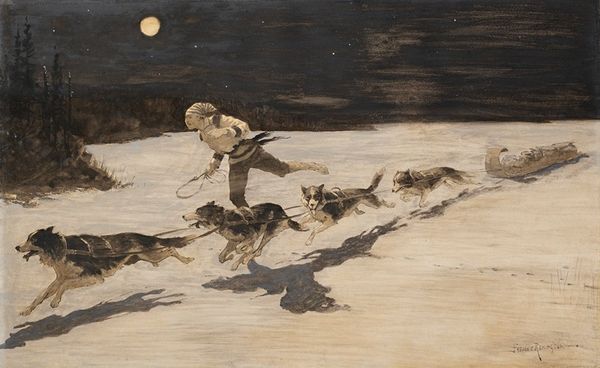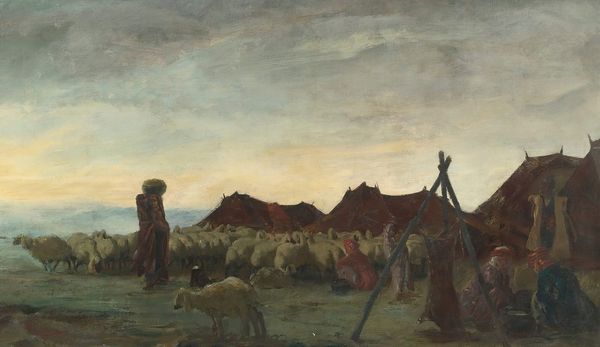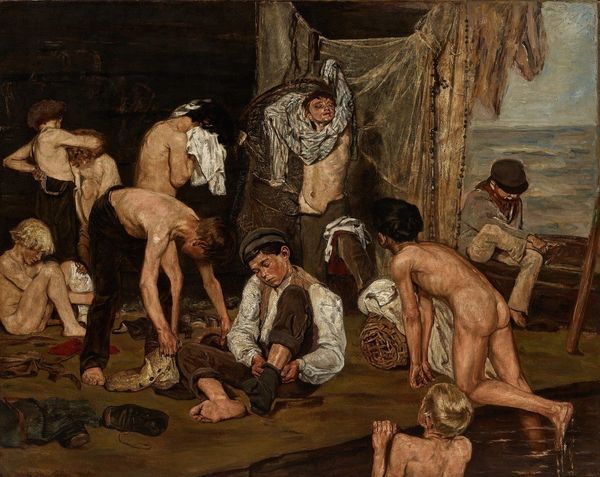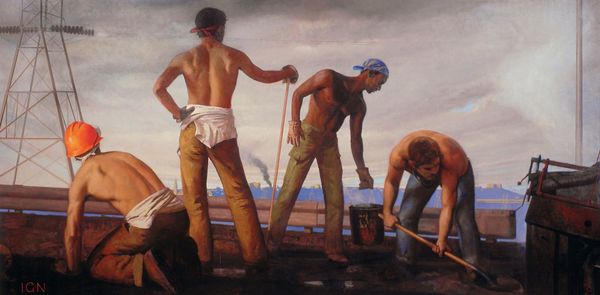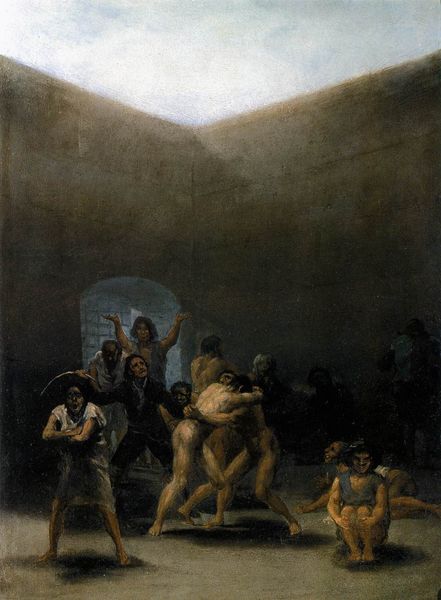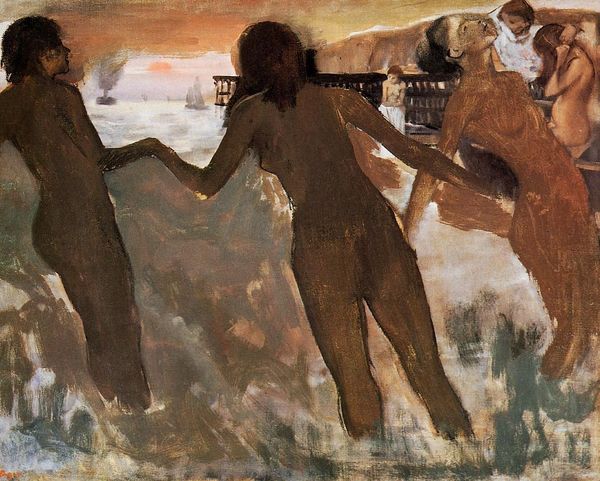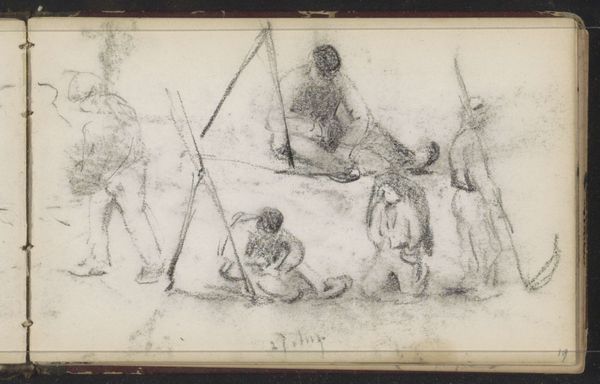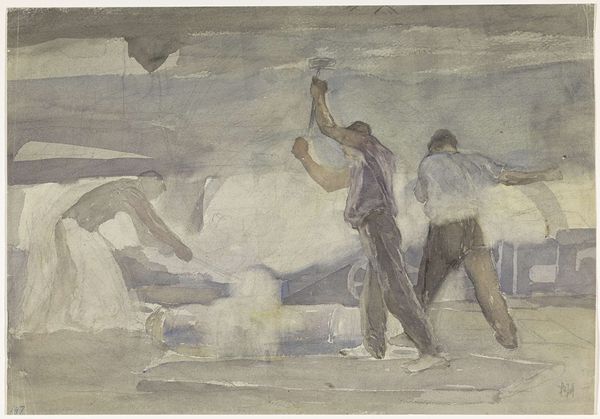
painting, oil-paint
#
african-art
#
narrative-art
#
painting
#
oil-paint
#
sculpture
#
painted
#
group-portraits
#
mixed media
#
modernism
#
realism
Copyright: Public domain
Editor: Here we have Horace Pippin’s 1945 painting, “The Barracks.” The stark scene, rendered in oil, depicts what I presume are soldiers inside their living quarters. There's a heavy mood, almost claustrophobic, yet a strange sense of quiet intimacy too. What feelings or stories does this artwork spark for you? Curator: It’s true, isn't it? Pippin invites us into a world usually unseen, the quiet moments within the machinery of war. Look at the muted palette, the layering of grays and browns, it’s like memory itself, softened and fragmented. He never shies from a truth. And those floating objects, suspended between the bunks; do you read them as religious imagery, or something else entirely? Editor: I hadn’t considered that, but religious imagery makes sense, a reaching towards something spiritual amidst the mundane reality of their lives. What do you make of the subjects' placement and attitudes? Curator: I love that you called them “subjects” – which invites a subtle focus on individuality that’s so important here! Pippin himself served in World War I. What would have that existence been? Wounded and injured, and yet continuing, he’s able to deliver on canvas a perspective from inside that experience. There are figures tending to tasks, some asleep – each frame like a vignette, no heroic flourish, just quiet observation. You can't look away. It is hauntingly beautiful, wouldn't you agree? Editor: I agree completely. It offers such a nuanced and intimate glimpse into a world I hadn’t previously imagined, expanding my understanding of not just war, but also how humanity perseveres within it. Curator: Absolutely, and isn’t that the joy of art, to keep shifting your sightline?
Comments
No comments
Be the first to comment and join the conversation on the ultimate creative platform.
